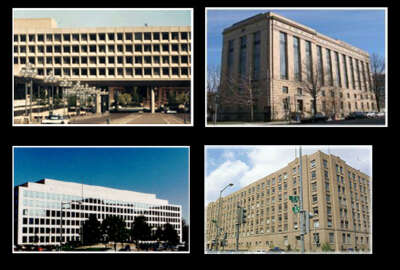
Is there a bonus in your future?
Wall Street is famous, some would say infamous, for its bonuses, but Senior Correspondent Mike Causey says Uncle Sam hands out a lot of cash attaboys too.
When is the last time you got a bonus? How much was it? What, if anything, did you do to deserve it? Was it for some extraordinary work, idea or output? Or was it just your turn?
If a team of producers and researchers from 60 Minutes investigated your agency’s bonus system, would they find it unworthy of air time, because it showed a government program that worked pretty well? Or would they come up with example-after-example of taxpayer ripoffs of the worst kind? Worthy of leading the show.
If a fair, honest probe of your agency’s bonus system were done, would it prompt a congressional committee to call your office, to congratulate you, your boss and the entire agency for a job well done? Or would the committee’s lawyers order the head of your agency or department to report to Capitol Hill for a 2016 version of the Spanish Inquisition?
Although most people associate bonuses (especially those of obscene amounts) with Wall Street and the banking business, many outside of government are unaware that Uncle Sam has his own program. For the sake of the bonus program that is probably just as well. Many nonfederal taxpayers — if they were aware of the system — would likely find it generous. To a fault. Because …
The executive branch of government paid out an estimated $332 million in employee bonuses in FY 2012 according to the Asbury Park (New Jersey) press. It’s story was a Page One feature in USA Today. The point of the piece was to show how bonuses had dropped off — to a mere $176.6 million — the following year, largely because of sequestration. And a White House directive that limited discretionary bonuses to 1 percent of payroll for rank-and-file workers, and no more than 5 percent of payroll for senior executives. Bonuses required by law were not subject to the White House cap. The 2014 Press story said that bonuses were down both in terms of dollar rewards and people getting them. It said the number of feds getting bonuses “fell sharply, from 360,000 in 2012 to about 155,000” the following year. So, the question is, is that a lot, or not enough? Too many or two few?
According to the report, a dozen feds received awards of $50,000 each. Half of them — three were attorneys — received just under $63,000.
Some agencies are a lot more generous than others when it comes to the size of bonuses and awards and the number of employees who get them. The paper named the relatively small Alexandria-based Patent and Trademark Office ($33.8 million), the much larger Veterans Health Administration ($27.3 miilion) and the also large Customs and Border Protection ($221 million) as the government’s bonus kings. The PTO has lots of lawyers and one of the most vigorous work-from-home programs in the government.
In talks with a dozen feds, from recent retirees to relatively young workers, it appears that bonus programs vary widely across government.
One employee said in his agency, “It is strictly by rotation. If we know somebody is going to retire that year, he for sure, gets a bonus.” He said it was the equivalent of “the old gold watch” for a long-time employee.
Another worker said in her agency, “It is a lawyers-helping-lawyers program.” She said most of the people she knew who won bonuses or cash awards were attorneys. She said it could be coincidence, or that they do the best work “or they write up the best award proposals for friends and themselves.”
So how does it work at your place? Are the workers who deserve bonuses and awards getting them? Or is it primarily a buddy-system program to give some extra cash to friends of friends?
Register for Wednesday’s self-plus-on online chat
Is the new two-person, self-plus-one option for you? In a word, almost certainly YES, YES, YES, While there is little price difference between the self-plus one and family coverage in a few FEHBP plans, you can literally save thousands of dollars in premiums next year by moving into the selfie option. How come, and how do you do it? Tomorrow at 11 a.m., health insurance expert Walton Francis and Senior Correspondent Mike Causey will talk about the new self-plus-one option. And what’s in it for you. You can sign up (its free) now for the online chat: register now.
Nearly Useless Factoid
By Michael O’Connell
When the Denver Broncos played their first season in 1960, the team’s uniforms were mustard yellow and brown, with vertical-striped socks.
Source: History of NFL Uniforms
Copyright © 2025 Federal News Network. All rights reserved. This website is not intended for users located within the European Economic Area.
Mike Causey is senior correspondent for Federal News Network and writes his daily Federal Report column on federal employees’ pay, benefits and retirement.
Follow @mcauseyWFED





